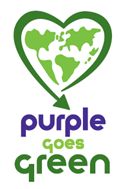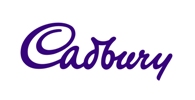Cadbury Reports on Water Progress
Published 03-25-09
Submitted by Cadbury

- March 25, 2009 - At a time when world water issues are front of mind, Cadbury has achieved a 17% reduction in water consumption since 2006 through increasing its efficiency of production, recovery, harvesting and recycling water. The continuing commitment comes as part of Cadbury's Purple Goes Green Initiative, launched in 2007.
Cadbury recognises that water scarcity, which currently affects two in every four people, is a key issue in a number of areas where it operates. As such, by 2008, Cadbury had successfully achieved its target of having water reduction programmes in place in 100% of water scarce sites. In addition to this, water reduction programmes are now being extended across all Cadbury sites and not just those which are water scarce.
Cadbury recognises that reducing its water consumption is not enough, and is working with local communities in areas of water scarcity to achieve water positivity, giving more water back to the watershed than is taken out. To achieve this, plants have used methods including water recovery and harvesting, such as the plant in Bangalore, India; or recycling, such as the Lagos plant in Nigeria.
Cadbury's Asia and Pacific business units are leading activity in this area and helping to inform wider development. Since early 2008 Cadbury has started to share lessons from these businesses, through workshops and Water Management Toolkits, with other business units.
Cadbury India: Bangalore case study
In Bangalore in the South of India Cadbury has a plant producing Halls candy and Bubbaloo gum. Bangalore exists in an area of physical water scarcity and the Cadbury Bangalore factory aims for a goal of zero water discharge.
The factory has harvested, cleaned and filtered rainwater for recharging the aquifer, providing assistance for 40% of the population dependant on groundwater. The factory has implemented forms of capturing this water for recovery and re-using it from the 60 hectare site. The storm water from the roof of the factory is collected and is re-used directly into cooling towers and boilers.
A three phased approach is in operation in Bangalore:
- Phase one: Rain Water Harvesting. By collecting the rain water from the 15,000 sq m of factory roof, water will be saved and returned to the aquifer.
- Phase two: recover process water from the waste water treatment plant. With appropriate treatment, the water can be reused in cooling towers, boilers and toilets.
- Phase three: take the water from the storm water dam, filter it and return it to the aquifer during the monsoon season.
About Cadbury
Cadbury is a leading global confectionery company with an outstanding portfolio of chocolate, gum and candy brands. It has the largest and most broadly spread emerging markets business of any confectionery company. With origins stretching back nearly 200 years, Cadbury's brands include many global, regional and local favourites including Cadbury, Creme Egg and Green & Black's in chocolate; Trident, Dentyne, Hollywood and Bubbaloo in gum; and Halls, Cadbury Eclairs, Bassett’s and The Natural Confectionery Company in candy.
About Purple Goes Green
In June 2007, Cadbury set the following targets:
- Energy "“ 50% reduction in our absolute carbon emissions
- Packaging "“ 10% reduction in standard product packaging and a more stretching target of 25% for seasonal and gift ranges
- Water "“ 100% of "water scarce" sites will have water reduction programmes in place
- Advocacy - Campaign for change with colleagues, suppliers, customers, peers, civil society and consumers
Energy
- By the end of 2007 Cadbury had reduced its carbon emissions by 3 per cent, as compared to 2006, and estimates a 10 per cent reduction by 2010.
- In 2007, all the electricity used in Ireland was changed to power provided by wind turbines, reducing the carbon emissions for the Irish business by almost 40%.
- In 2008, Cadbury launched the largest roof top solar installation in New South Wales, Australia. The system is made up of a total of 640 solar panels and is capable of producing enough energy to power 21 homes while saving 140 tonnes of greenhouse gas emissions or the equivalent to taking 35 cars off the road.
- Cadbury has made considerable progress in implementing renewable energy sources, such as: hydropower to supply sites in Tasmania and Ghana; solar heating in Pakistan; and renewable power in Canada. At its Induri site in India, bagasse from the local sugar industry is used to fuel boilers on site. In Baura in Brazil, the heat of the sun is used to generate hot water for the kitchens and amenities block.
- Cadbury Eco Eggs were a new product for Easter 2008 which have no cardboard box and are just wrapped in foil. This reduces plastic by 78 per cent and used 65 per cent less cardboard than a standard egg. The eggs won a Green Award for Best Green Packaging in November 2008
- In 2008, Cadbury North America launched a new display case for products such as Trident Xtra Care, using 50 per cent less cardboard. As well as saving on materials, these display cases were also more efficient to transport.


